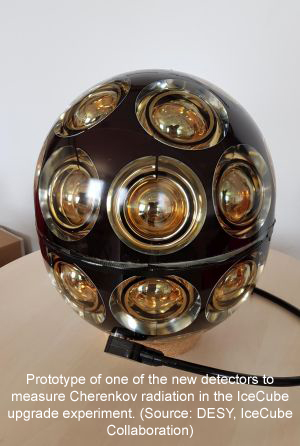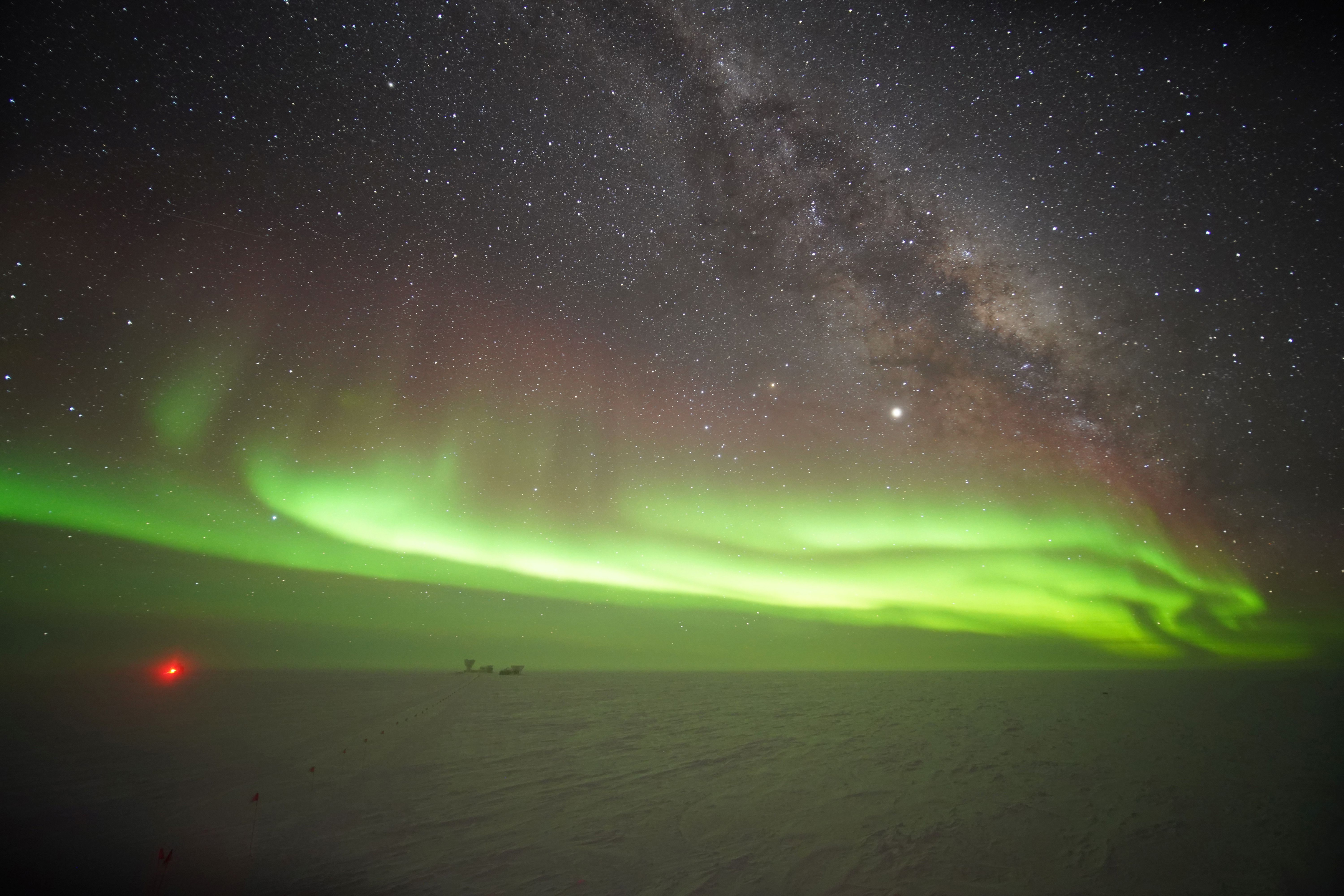New detector in IceCube observatory will allow deeper studying of neutrino
World science, 01 August 2019
The South Pole Observatory is being upgraded with participation of Germany. The IceCube detector is being extended to also measure lower energies and, hence, the properties of neutrinos with so far unreached accuracy. In this way, understanding of basic processes in the universe will be enhanced.
 In 2017, the IceCube Neutrino Observatory that is part of the US-American Amundsen-Scott South Pole Station found convincing proof of a first source of high-energy cosmic neutrinos. Neutrinos are super-light particles without electric charge that weakly interact with the matter. Catching this particle is challenging that is why it is often called a ghost particle.
In 2017, the IceCube Neutrino Observatory that is part of the US-American Amundsen-Scott South Pole Station found convincing proof of a first source of high-energy cosmic neutrinos. Neutrinos are super-light particles without electric charge that weakly interact with the matter. Catching this particle is challenging that is why it is often called a ghost particle.
Such observatories as the IceCube are able to do this. IceCube serves to measure high-energy neutrinos in an ice volume of one cubic kilometre. As neutrinos proper do not emit any signals, the tracks of muons are measured precisely. Mions are elementary particles sometimes produced by the interaction of neutrinos with ice. Contrary to neutrinos, muons carry an electric charge. On their way through the ice, they produce a characteristic light cone, the so-called Cherenkov radiation. Highly sensitive detectors measure this blue radiation. Currently, 5160 detectors on 86 cables are installed 1500 to 2500 m deep in the ice.
“Within the framework of the IceCube upgrade project, seven additional cables will be installed deep in the ice in the middle of the existing lines. They are equipped with 700 upgraded detectors,” says Dr. Andreas Haungs, Head of the IceCube group of KIT. “The ice in and around the detector is highly transparent, which is ideal to study the properties of very quick, i.e. relativistic, particles.”
The planned IceCube upgrade detector will consist of two different types of optical modules to test two technologies for the future tenfold enlargement of IceCube, IceCube-Gen2. One of the new optical sensors, the multi-Pixel Digital Optical Module (mDOM) was developed in Germany. Compared to previous modules, mDOM has a much larger and segmented detection area, as a result of which a much higher sensitivity is reached.
Press Release of the Karlsruhe Institute of Technology
 Polar light above the South Pole. The red point is the IceCube Laboratory. The neutrino experiment proper is installed several kilometers deep in the ice. (Photo: Kathrin Mallot, IceCube, NSF)
Polar light above the South Pole. The red point is the IceCube Laboratory. The neutrino experiment proper is installed several kilometers deep in the ice. (Photo: Kathrin Mallot, IceCube, NSF)